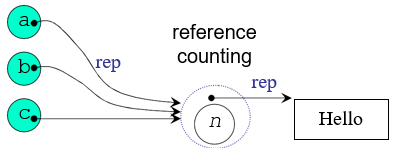文章目录
- 简介
- 构造器
- 效率测试
- 字符缓冲流特有方法
简介
-
为了提高数据读写的速度,Java API提供了带缓冲功能的流类:缓冲流。 -
缓冲流要“套接”在相应的节点流之上,根据数据操作单位可以把缓冲流分为:
- 字节缓冲流:
BufferedInputStream,BufferedOutputStream - 字符缓冲流:
BufferedReader,BufferedWriter
- 字节缓冲流:
-
缓冲流的基本原理:在创建流对象时,内部会创建一个缓冲区数组(缺省使用
8192个字节(8Kb)的缓冲区),通过缓冲区读写,减少系统IO次数,从而提高读写的效率。


构造器
public BufferedInputStream(InputStream in):创建一个 新的字节型的缓冲输入流。public BufferedOutputStream(OutputStream out): 创建一个新的字节型的缓冲输出流。
代码举例:
// 创建字节缓冲输入流
BufferedInputStream bis = new BufferedInputStream(new FileInputStream("abc.jpg"));
// 创建字节缓冲输出流
BufferedOutputStream bos = new BufferedOutputStream(new FileOutputStream("abc_copy.jpg"));
public BufferedReader(Reader in):创建一个 新的字符型的缓冲输入流。public BufferedWriter(Writer out): 创建一个新的字符型的缓冲输出流。
代码举例:
// 创建字符缓冲输入流
BufferedReader br = new BufferedReader(new FileReader("br.txt"));
// 创建字符缓冲输出流
BufferedWriter bw = new BufferedWriter(new FileWriter("bw.txt"));
效率测试
查询API,缓冲流读写方法与基本的流是一致的,我们通过复制大文件(375MB),测试它的效率。
//方法1:使用FileInputStream\FileOutputStream实现非文本文件的复制
public void copyFileWithFileStream(String srcPath,String destPath){FileInputStream fis = null;FileOutputStream fos = null;try {//1. 造文件-造流fis = new FileInputStream(new File(srcPath));fos = new FileOutputStream(new File(destPath));//2. 复制操作(读、写)byte[] buffer = new byte[100];int len;//每次读入到buffer中字节的个数while ((len = fis.read(buffer)) != -1) {fos.write(buffer, 0, len);}System.out.println("复制成功");} catch (IOException e) {throw new RuntimeException(e);} finally {//3. 关闭资源try {if (fos != null)fos.close();} catch (IOException e) {throw new RuntimeException(e);}try {if (fis != null)fis.close();} catch (IOException e) {throw new RuntimeException(e);}}
}@Test
public void test1(){String srcPath = "C:\\Users\\Desktop\\01-复习.mp4";String destPath = "C:\\Users\\Desktop\\01-复习2.mp4";long start = System.currentTimeMillis();copyFileWithFileStream(srcPath,destPath);long end = System.currentTimeMillis();System.out.println("花费的时间为:" + (end - start));//7677毫秒}//方法2:使用BufferedInputStream\BufferedOuputStream实现非文本文件的复制
public void copyFileWithBufferedStream(String srcPath,String destPath){FileInputStream fis = null;FileOutputStream fos = null;BufferedInputStream bis = null;BufferedOutputStream bos = null;try {//1. 造文件File srcFile = new File(srcPath);File destFile = new File(destPath);//2. 造流fis = new FileInputStream(srcFile);fos = new FileOutputStream(destFile);bis = new BufferedInputStream(fis);bos = new BufferedOutputStream(fos);//3. 读写操作int len;byte[] buffer = new byte[100];while ((len = bis.read(buffer)) != -1) {bos.write(buffer, 0, len);}System.out.println("复制成功");} catch (IOException e) {e.printStackTrace();} finally {//4. 关闭资源(如果有多个流,我们需要先关闭外面的流,再关闭内部的流)try {if (bos != null)bos.close();} catch (IOException e) {throw new RuntimeException(e);}try {if (bis != null)bis.close();} catch (IOException e) {throw new RuntimeException(e);}}
}
@Test
public void test2(){String srcPath = "C:\\Users\\Desktop\\01-复习.mp4";String destPath = "C:\\Users\\Desktop\\01-复习2.mp4";long start = System.currentTimeMillis();copyFileWithBufferedStream(srcPath,destPath);long end = System.currentTimeMillis();System.out.println("花费的时间为:" + (end - start));//415毫秒}
字符缓冲流特有方法
字符缓冲流的基本方法与普通字符流调用方式一致,不再阐述,我们来看它们具备的特有方法。
- BufferedReader:
public String readLine(): 读一行文字。 - BufferedWriter:
public void newLine(): 写一行行分隔符,由系统属性定义符号。
public class BufferedIOLine {@Testpublic void testReadLine()throws IOException {// 创建流对象BufferedReader br = new BufferedReader(new FileReader("in.txt"));// 定义字符串,保存读取的一行文字String line;// 循环读取,读取到最后返回nullwhile ((line = br.readLine())!=null) {System.out.println(line);}// 释放资源br.close();}@Testpublic void testNewLine()throws IOException{// 创建流对象BufferedWriter bw = new BufferedWriter(new FileWriter("out.txt"));// 写出数据bw.write("小");// 写出换行bw.newLine();bw.write("淼");bw.newLine();bw.write("淼");bw.newLine();// 释放资源bw.close();}
}
说明:
涉及到嵌套的多个流时,如果都显式关闭的话,需要先关闭外层的流,再关闭内层的流
其实在开发中,只需要关闭最外层的流即可,因为在关闭外层流时,内层的流也会被关闭。







![[openCV]基于拟合中线的智能车巡线方案V1](https://img-blog.csdnimg.cn/b04919a83b5e4a5a9cd456d7a79af459.png)


